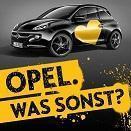Classifica Utenti
Utenti più Apprezzati
(Scegli il periodo) Utenti più Apprezzati
(Storia giorno per giorno) Classifica dall'Origine
(da Marzo 2003)
(Scegli il periodo) Utenti più Apprezzati
(Storia giorno per giorno) Classifica dall'Origine
(da Marzo 2003)
-

KimKardashian
Utente Registrato33Punti13995Numero contenuti pubblicati -
DOssi
Utente Registrato21Punti1176Numero contenuti pubblicati -
AlexMi
Utente Registrato19Punti9928Numero contenuti pubblicati -
AndreaB
Utente Registrato16Punti16526Numero contenuti pubblicati
Contenuti più Popolari
Stai visualizzando i contenuti con il più alto punteggio, pubblicati in data 08/02/23 e localizzati Tutte le aree/sezioni
-
Non ci sono risultati da mostrare
La Leaderboard è riferita all'orario Roma/GMT+01:00






